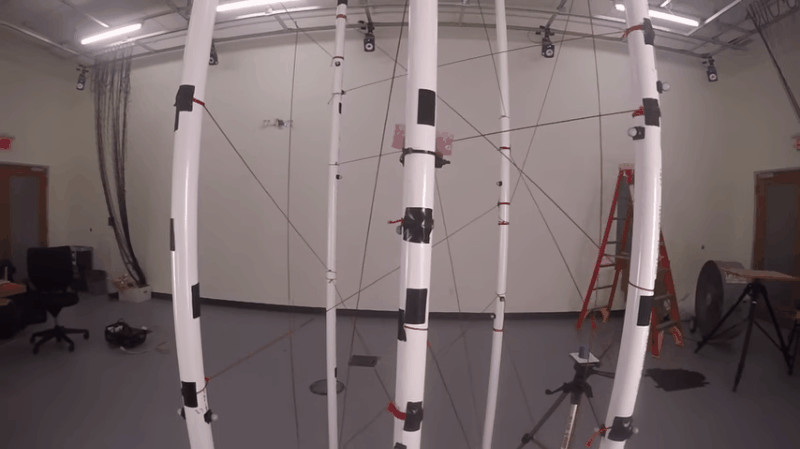
Drones are cool, until they go and crash. But new tech from MIT might turn your drone into an obstacle-avoiding craft with creature-like reflexes, dodging and making loops around trees or buildings like a nimble hummingbird.
The Computer Science and Artificial Intelligence Lab at MIT just announced new experimental drone software that lets UAVs make donuts and figure-eights around a web of strings in a “simulated forest.” The drones employ obstacle-sensing technology that lets them make “real-time flight plans”—which is a very big deal, as it could make drones smarter and more autonomous than ever before.
You see, with robots, the biggest challenge is getting them to adapt to their environment and make decisions on their own without human help. MIT’s latest accomplishment is a big step forward in drone AI, and can make the aircraft more useful in everything from, say, covert intel-gathering for the military, to helping winemakers monitor the health of their wine grapes without the need for pre-programmed maps.
With this new software, the three-and-a-half inch, one-ounce drones seek out segments of free space to fly into using onboard sensors and measurement units, rather than identifying obstacles and trying to avoid them. This creates a “a more ‘glass-half-full’ approach that works far better for drones in small, cluttered spaces,” says MIT graduate Benoit Landry.
Sponsored
MIT’s been experimenting with autonomous drone tech for a while. Last November, a PhD student developed his own tree-dodging algorithm and tested the drone in a field at 30 mph. This latest software is more advanced, letting the UAVs navigate more complex, dense obstacle courses, Entrapment-style. What’s more, the team tested the software with two types of drones: quadcopters and fixed-wing aircraft.
The new tech is convenient, because it can make drones less prone to crashes, and able to navigate more interesting environments. Forget the wide-open field—bring on the forest.
[MIT]
GIF and video via MIT
